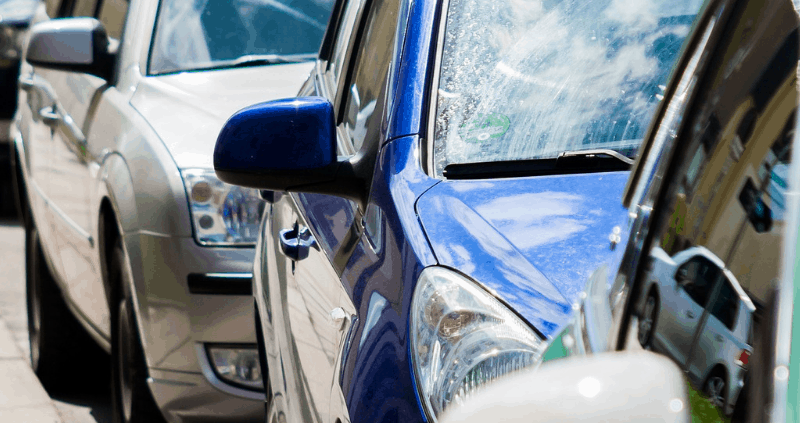What is a Traffic Break?

The state of California is in the top 10 for the states with the strictest driving laws in the nation. As a California driver, you probably already know this. But what you may not know is how to reduce your risk of getting ticketed under certain special situations, such as being caught in a traffic break.
What is a traffic break? How can you recognize when one is forming near you? Why do they occur and how should you handle it to avoid getting a traffic ticket? This article will answer all of these questions and then let you in on a little secret – how to get your traffic ticket dismissed quickly and easily. (HINT: Be sure to read all the way through to the end of this post to find out!)
What Is a Traffic Break?
This type of break is sometimes also called a rolling roadblock. Basically, it is any kind of separation that occurs in congested traffic.
Sometimes these separations occur naturally. But the most common reason is when the California Highway Patrol (CHP) creates a rolling roadblock manually by maneuvering among the traffic to break up the flow.
Why Do They Happen?
Rolling roadblocks occur for all kinds of reasons that ultimately relate back to roadway and driver safety.
For example, if there is something on the road that needs to be removed, such as a tire tread or debris, the police may use a rolling roadblock to clear the area just around the object so it can be picked up safely.
Another common example is when there is road work being done. Police officers may create a rolling roadblock around the workers to slow down traffic or even re-route drivers for everyone’s safety.
Yet another all-too-common example is when there has been an accident on the roadway. Rather than completely shutting down the freeway, officers may use their vehicles to create a rolling roadblock that re-routes drivers around the area where the accident occurred.
And sometimes rolling roadblocks are simply used to break up severe traffic congestion, especially around major intersections where accidents frequently occur.
How Does a Rolling Roadblock Work?
Here is a basic step-by-step of how most rolling roadblocks are carried out.
First, the officers gather near the area that needs to be cleared. Using their two-way vehicle communication systems, the officers involved coordinate their break strategy.
The officer(s) turn on their flashers and sirens and begin to weave or swerve in and out among traffic. This causes the other drivers to slow down and become watchful. When the danger has passed or the congestion has eased, the rolling roadblock concludes and it is back to business as usual.
How Should You Behave and Drive?
It can be stressful to find yourself suddenly involved in a rolling roadblock. Here is this police vehicle (motorcycle or car or both), sirens wailing and lights flashing, driving erratically for no apparent reason you can detect.Your initial instinct will likely be to either slow down (which is the intent of this police maneuver) or try to speed up and get past it all.
Whatever you do, you don’t want to speed up and try to drive around the officers! This is one quick way to get yourself pulled over and ticketed. Trying to pass a police vehicle conducting a rolling roadblock is illegal in the state of California and is grounds for an immediate moving violation citation.
Not only will you likely be cited, but you also run the risk of hitting other vehicles (including the police vehicles) or finding yourself in the midst of the accident, road debris, construction or other incident which prompted the initiation of the roadblock in the first place.
The hands-down best way to conduct yourself during a police rolling roadblock is to stay calm, slow down, follow all police instructions and be patient until the rolling roadblock has ended.
Sometimes you may feel tempted to drive around the rolling roadblock by using the open shoulder on either side (left or right). This, too, will get you ticketed faster than you can say “rolling roadblock.”
Not only is it illegal to use the shoulder of the freeway for driving, but it is also illegal to use the shoulder (or any lane) to pass a police vehicle who is setting up a rolling roadblock.
But there is one more way you may earn yourself a traffic ticket during a rolling roadblock, and it is one that you might not suspect: driving too slow. These tickets can be just as pricey as speeding tickets. Rather, simply follow CHP’s speed lead.
How to Get Your Traffic Break Traffic Ticket Dismissed
So now you know you can actually get a traffic ticket by behaving incorrectly during rolling roadblocks. Unfortunately, traffic tickets for this and other reasons are all too common in the state of California, where traffic laws are uncommonly strict compared to most other states.
If you get a traffic ticket issued by the CHP, you can head over to staging-vadusuxe.kinsta.cloud to avoid paying and having points deducted from your license.
How to Use TicketBust to Dismiss Your Traffic Ticket
At TicketBust, we walk you through the process of getting your traffic ticket dismissed without having to go to court, pay any extra fees or enduring any long wait times.
Happily, the whole process takes only about five minutes from start to finish. You don’t need to hire an attorney or even make a single phone call to get your traffic ticket dismissed.
All you need to do is take a picture of your citation, upload it to the website, fill in a form giving a few more details about your citation, complete your order and wait for notification that everything has been successfully processed.
You can use the website on your computer or tablet or the TicketBust app on your smart phone to get started – visit staging-vadusuxe.kinsta.cloudtoday!

